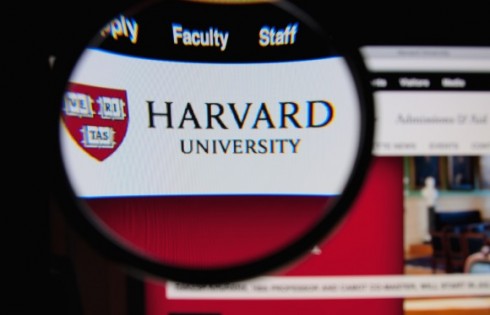
Wealthy universities’ treatment of adjuncts punishes free expression, hurts students and violates basic dignity
The immensely wealthy American university system pays nearly half its professors about $3,500 on average per course. This practice hurts the faculty as well as the students they teach.
“I’m a member of an overwhelmingly liberal profession, which routinely decries social and cultural inequities around race, gender, and class,” University of Pennsylvania historian and tenured professor Jonathan Zimmerman wrote in a recent op-ed in The Philadelphia Inquirer.
“But in its own workplaces, it has also created one of the most inequitable systems of labor in the United States.”
Nearly 43 percent of professors overall in the United States are “part-time contingent faculty members,” also known as adjunct professors, who are hired course by course and not on track to get tenure, according to a 2021 report from the American Association of University Professors, a faculty professional organization. The data in the report is the most recent available.
“In 2019–20, average pay for part-time faculty [adjunct] members teaching a three-credit course section was $3,556,” according to the AAUP. That’s a standard college course. Assuming an adjunct professor teaches three courses in the fall semester and three in the spring, they would earn $21,336 in one year with no summer pay or benefits.
Yet they are officially classified as “part-time” no matter how many courses they teach, according to the AAUP.
Many adjunct professors teach more courses, often across multiple campuses. They often work 40 hours a week or many more.
However, “whether these faculty members teach one class or five, the common characteristic among them is that their institutions make little or no long-term commitment to them or to their academic work,” according to a separate statement by the AAUP.
Most adjuncts have earned at least a master’s degree and often a doctorate in their field, according to the AAUP.
Even more, “while a small percentage of part-time faculty are specialists or practitioners of a profession such as law or architecture and teach a class on the side, this situation is the exception rather than the norm,” according to the AAUP. “In other words, contingent faculty are ‘real’ faculty, not other professionals who are moonlighting by teaching a course.”
Many graduate students, including some with free tuition and health insurance, also work as part-time professors. However, the 43 percent adjunct figure does not include graduate student teachers, according to the AAUP.
Roughly a quarter of adjunct professors currently rely on public assistance, and some live in their cars, Penn historian said
“I’m one of the lucky ones because I hold a tenure-track position,” Zimmerman wrote in his op-ed. “Now that I have tenure, I can also express my opinions — including those in this column — without fear of penalty or dismissal. Most American faculty members aren’t so fortunate.”
Secure jobs are increasingly rare:
Tenure-track positions were already drying up in the mid-1990s, thanks to budget cuts in state legislatures and a glut of doctorates on the job market. Newspapers profiled “freeway fliers,” scholars with doctorates — but without full-time jobs — who drove from campus to campus, teaching multiple classes for negligible pay.
Many of these adjuncts did not receive basic amenities, like an office or a mailbox. Not surprisingly, they spent less time interacting with students than full-time professors did; they were also less likely to assign essays and more likely to use multiple-choice tests, which were easier to grade.
Things have only gotten worse since then. …
Roughly a quarter of adjunct professors rely on public assistance [as of a 2020 report]. Some of them live in their cars; others have turned to sex work to make ends meet.
This situation is hard enough on the professors but also bad for the college kids they teach.
“Part-time faculty members…are discouraged by their employment arrangements from spending time outside of class with students or on student-related activities, whether in office hours and less formal interactions or in class preparation and grading papers,” according to the AAUP statement.
“In addition, the practice of paying very low wages to adjuncts pressures many to support themselves by seeking multiple course assignments on multiple campuses, thus further limiting their opportunities to interact with students,” it stated.
Adjunct conditions may also contribute to upholding a university political monoculture.
“Contingent faculty may be less likely to take risks in the classroom or in scholarly and service work,” the AAUP stated. “The free exchange of ideas may be hampered by the specter of potential dismissal or nonrenewal for unpopular utterances. In this chilling atmosphere, students may be deprived of the robust debate essential to citizenship.”
Universities sit on billions but pay their adjuncts pennies
Individual universities rarely publish data on adjunct faculty, and reliance varies by school, according to the AAUP. Some small colleges may have few adjuncts or none at all.
However, two facts are clear: American university wealth is immense, and nearly half of its professoriate makes just a few thousand dollars per course with no additional benefits. The University of California system as a whole has approximately $152 billion in investments, for example, yet “an increasing proportion of the teaching conducted by the university is performed by contingent and nontenured faculty…with limited job security and little or no role in faculty governance,” according to a January 2023 UCLA report.
If more than 40 percent of professors are earning in the low five figures or worse, and universities are getting richer and richer, where is all the tuition and donation money going? Some of it funds a bloated administration, including the DEI bureaucracy, the Title IX bureaucracy, deans upon deans, and presidents’ salaries.
“Our Faculty Compensation Survey results indicate that the median base salary of presidents of doctoral institutions is over $500,000, and most college and university presidents also receive substantial housing provisions, car allowances, and other lavish perks that are often undisclosed to the public,” the AAUP stated in its 2020-21 report.
Colleges also give expensive bogus jobs to famous people and politicians. Before he became president, Joe Biden “collected $371,159 in 2017 and $540,484 in 2018 and early 2019 from the University of Pennsylvania for a job with largely undefined duties,” The Fix reported in 2021. “The agreement also required around a dozen appearances on campus, most of which were attended by wealthy donors paying top-dollar for tickets.”
Even more, many universities splurge on fancy perks to attract students, empowering one Harvard Crimson editor to demand library “nap pods” to promote student health, The Fix reported.
Luxury amenities are nonessential. Some professors study and teach topics of dubious value. Yet if all adjuncts disappeared, the university system would stop functioning.
Some 36,000 adjunct professors and other academic workers at all 10 University of California campuses demanded increased pay and benefits in a December 2022 strike, “the largest of its kind in the nation,” the Associated Press reported last December. By stepping away from their classes for more than a month, the workers won pay increases of between 20 and 80 percent. Contingent academic workers also went on strike at Temple University and throughout the New Jersey public university system last month.
It’s not clear yet how California will pay for its increases, The College Fix reported. However, the strikers have a point.
Colleges and universities are largely wealthy institutions, not small businesses struggling to make ends meet. They could find a way to cut corners and invest those savings in their faculty.
When college teachers are good, they offer an education that sets the course of their students’ adult lives.
For the sake of good teaching and basic decency, college and universities should grant professors a tolerable standard of living and freedom to tell the truth.
MORE: Professors publish ‘controversial’ paper defending merit in science
IMAGE: Aleutie/Shutterstock
Like The College Fix on Facebook / Follow us on Twitter






Please join the conversation about our stories on Facebook, Twitter, Instagram, Reddit, MeWe, Rumble, Gab, Minds and Gettr.